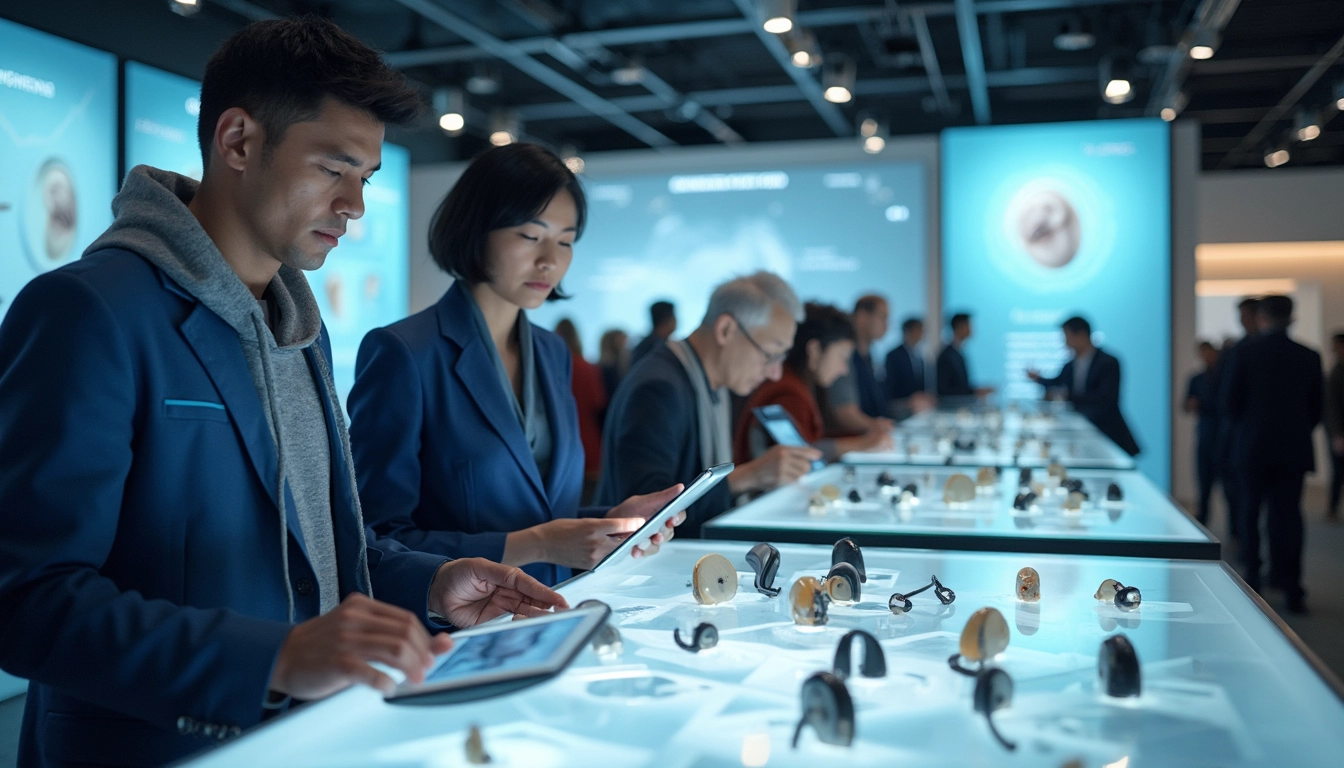
Revolutionary AI-Powered Hearing Aids: Transforming Auditory Experiences in 2024
Hearing aid technology is undergoing a remarkable transformation, with 2024 set to bring groundbreaking advancements. The integration of artificial intelligence and cutting-edge features promises to revolutionize the hearing experience for millions worldwide.
Key takeaways:
- AI-powered signal processing enables real-time adjustments for optimal hearing
- Enhanced connectivity through seamless Bluetooth integration with various devices
- Augmented reality solutions offer language translation and captioning capabilities
- Remote care options provide more accessible hearing healthcare
- The global hearing aid market is projected to grow by $3.17 billion from 2024 to 2028
Table of Contents
AI-Powered Advancements in Hearing Aid Technology
The future of hearing aids is here, and it’s powered by artificial intelligence. In 2024, we’re seeing a surge in AI-driven features that are transforming the way people experience sound. These smart devices now offer real-time signal processing, allowing for instant adjustments based on the user’s environment. This means clearer conversations in noisy restaurants and crisper sounds in outdoor settings.
One of the most exciting developments is self-learning noise adaptation. This feature allows hearing aids to remember and adapt to your preferred settings in different sound environments. It’s like having a personal sound engineer working tirelessly to ensure you always hear your best.
Advanced directional microphones are another game-changer. They work in tandem with AI algorithms to focus on the sounds you want to hear while minimizing background noise. This technology is particularly beneficial in challenging listening situations, such as crowded public spaces or busy offices.
Health Monitoring and Connectivity
Modern hearing aids are no longer just about amplifying sound. They’re becoming sophisticated health monitoring devices. Some models now include sensors that can track vital health metrics like heart rate and blood pressure. This integration of biometrics into hearing aids opens up new possibilities for holistic health management.

Connectivity is at the heart of 2024’s hearing aid technology. Seamless Bluetooth integration allows users to connect their hearing aids directly to smartphones, TVs, and other devices. This means you can stream phone calls, music, and audio directly to your hearing aids without any intermediary devices.
User-friendly apps are making it easier than ever to customize your hearing experience. You can adjust volume, switch between listening modes, and even automate certain settings based on your location or time of day. These apps also provide real-time information about battery life and device status, ensuring you’re always connected and in control.
Augmented Reality and Remote Care
The integration of augmented reality in hearing aids is opening up exciting new possibilities. Imagine being able to see real-time captions of conversations or having foreign languages instantly translated into your preferred language. This technology is making communication more accessible and breaking down language barriers.
Remote care is another area where hearing aid technology is making significant strides. Telehealth consultations allow audiologists to adjust your hearing aids remotely, saving you time and ensuring you always have access to professional care. This is particularly beneficial for those living in rural areas or with limited mobility.
Market Growth and Future Prospects
The hearing aid market is poised for substantial growth. Industry reports project that the global market will expand by $3.17 billion from 2024 to 2028, with a compound annual growth rate of nearly 6.1%. This growth is driven by several factors, including an aging population and increased awareness of hearing health.
Technological advancements are a key driver of this market expansion. AI-enabled hearing aids and sophisticated sound processing algorithms are attracting more users, including younger individuals who may have previously been hesitant to use hearing aids.
As we look to the future, it’s clear that hearing aid technology will continue to evolve rapidly. We can expect even more integration with other smart devices, further miniaturization for more discreet designs, and potentially even more advanced health monitoring capabilities. The future of hearing health is bright, and it’s powered by innovation and technology.
Sources:
Behind the Ear Hearing Aid Innovations: What’s New in 2024
What to Know About Hearing Aid Technology in 2024
What to Know About Hearing Aid Technology in 2024
The Future of Audiology: 2024 and Beyond
Hearing Aid Market Size to Grow Significantly Through 2028



5 thoughts on “Revolutionary AI-Powered Hearing Aids: Transforming Auditory Experiences in 2024”